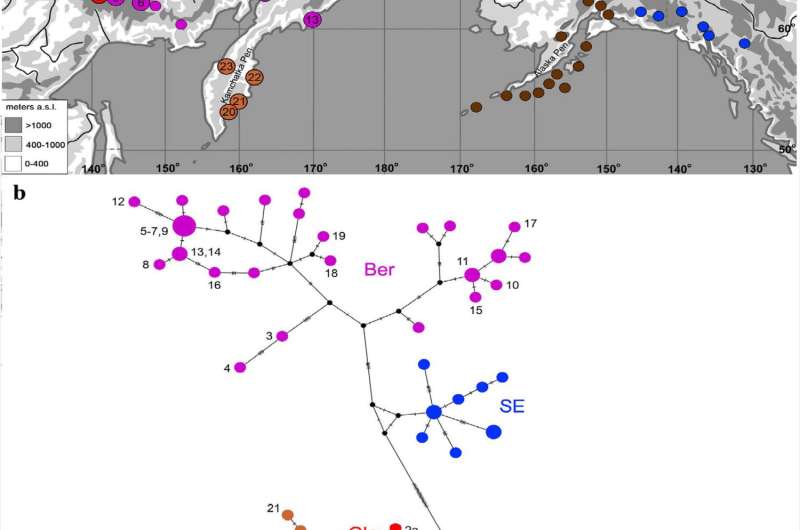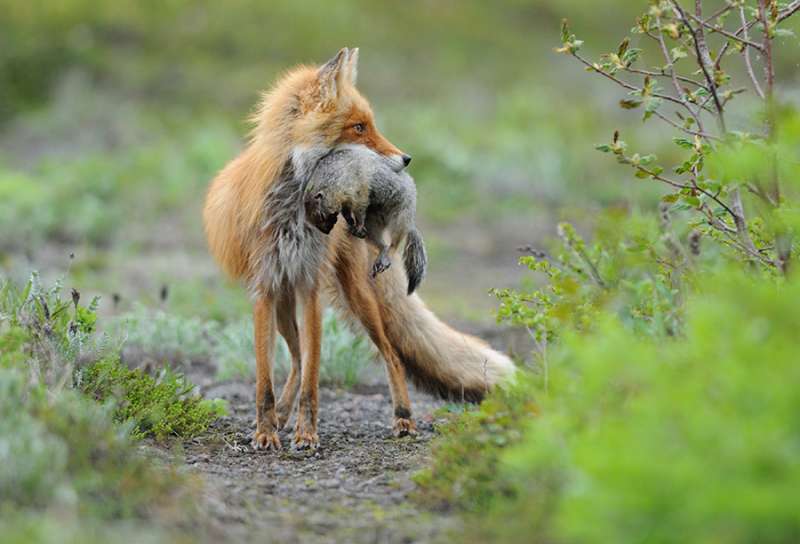Ancient ground squirrels prove to belong to a present-day species

Members of the Faculty of Biology of the Lomonosov Moscow State University have studied arctic ground squirrels in the Indigirka river basin, and found that their relatives now inhabit Kamchatka. The scientists have shared the research results in an article published in Scientific Reports.
Beringian ground squirrels are model organisms used by scientists for studies of trans-Beringian connections (namely, connections between the Old and New Worlds, established at existence time of the terrestrial Bering Land Bridge at the site of the Bering Strait). This fossil species was described by Boris Vinogradov, a Soviet zoologist. The description was made on the basis of three carcasses found in 1946 by unnamed gulag prisoners in vertical excavation shafts at a depth of 12.5 meters. Preservation of the mummified carcasses of the ground squirrels was so good that even ectoparasites (lice) were found in their hair. It's a unique find, as hair coats are rarely preserved.
Later, a biologist named Igor Gromov noticed that fossils of Citellus glacialis resemble Beringian ground squirrels inhabiting Alaska, but not northeastern Asia. It was a step up toward understanding the glacialis form with the help of molecular genetic methods. The scientists were interested in conducting this research in the 1990s, but lack of any experience with studying ancient DNA among Russian scientists at that time was a formidable obstacle.
The problem is that DNA degrades with time as a result of dehydration of carcasses, low temperatures, or strong salt content. That's why special processing of ancient DNA is necessary for study. Marina Faerman-Arkchangelskaya, who graduated from the Anthropology Department of the Lomonosov Moscow State University, currently working at the Hebrew University of Jerusalem, helped the scientists to solve this problem. She showed her Moscow colleagues how to work with ancient DNA and sequenced the cytochrome b gene in the U. glacialis paratype. Samples were compared with with present-day species based on this gene. She also dated the sample using a new device, the accelerator mass spectrometer (AMS) in Novosibirsk. It allows researchers to non-destructively date tissue microsamples. In other devices, researchers need a sample of at least five grams of carbon, which means a whole skull of a ground squirrel or a dog shoulder bone. Consequently, in cases of small animals, researchers take the larger half of a sample for dating. The analysis results show that the U. glacialis form is 30,000 years old, three times older than expected.

The U. Glacialis species has proved to be very similar to present-day Beringian ground squirrels (Urocitellus parryii). However, its closest relatives were only found in the Alaska Peninsula. The scientists also established that Beringian ground squirrels colonized Eurasia at least twice. It was likely connected with glaciation, before which ground squirrels managed to distribute in Asia from America. Later they became extinct in Asia because of cooling, and after warming, ground squirrels came back from Alaska.
Nikolai Formozov, a leading researcher in the Laboratory of Vertebrate Behavior and the article author, says, "In the course of the work, we asked ourselves if there were somewhere descendants of the first colonization wave in Eurasia. Kamchatka was the most appropriate region from this point of view, but we didn't have substances from there at that time. Igor Shpilenok, a famous blogger and photographer, was busy with a months-long photographic survey of animals in the Kronotsky Nature Reserve. The Moscow researchers reached out to him, and asked to assist in gathering tissue samples of ground squirrels. Then a fox named Alisa that lived near Igor began to bring ground squirrels to the doorstep of his lodge. These samples precisely proved the hypothesis—ground squirrels from Kamchatka appeared to be close relatives of the glacialis form. The fox was wild, but closely interacted with people, and sometimes brought ground squirrels, as they are easy prey in that region. Probably, it's a sign of trust, like when cats bring mice to their masters and become surprised that they are reluctant to eat them."
The scientists note that their project substantially contributes to understanding trans-Beringian connections and dispersal routes of various animals in the Pleistocene in northeastern Asia.
More information: Marina Faerman et al, DNA analysis of a 30,000-year-old Urocitellus glacialis from northeastern Siberia reveals phylogenetic relationships between ancient and present-day arctic ground squirrels, Scientific Reports (2017). DOI: 10.1038/srep42639
Journal information: Scientific Reports
Provided by Lomonosov Moscow State University





















